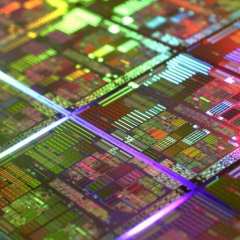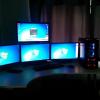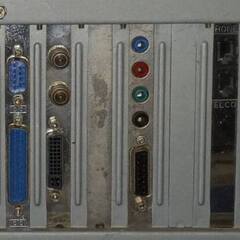-
Posts
2,793 -
Joined
About MG2R
- Birthday Sep 16, 1992
Profile Information
-
Gender
Male
-
Biography
I used to be “with it”. Then they changed what “it” was.
It’ll happen to you! -
Occupation
Buzzword bingo
-
Member title
THE (senior) noob
System
-
CPU
AMD 5600X
-
Motherboard
Aorus B550i
-
RAM
32 GB DDR4
-
GPU
EVGA 3070ti FTW3
-
Case
Fractal Design Torrent Nano
-
Storage
1 TB Samsung 980 pro
-
PSU
Seasonic Prime TX 850
-
Display(s)
Dell U23HM + LG ultragear 34 inch ultrawide
-
Cooling
Full custom loop, EKWB mostly, thick 120 + regular 140 + slim 240 rad. 100 noctua fans
-
Keyboard
Lenovo (nipple life)
-
Mouse
Corsair M65
-
Sound
Sennheiser HD 4.50 BTNC
-
Operating System
Arch Linux
-
Laptop
Lenovo T14s
Recent Profile Visitors
15,459 profile views
MG2R's Achievements
-

Error Code 1-8 in Windows Mixed Reality on HP Reverb G2
MG2R replied to Brown Fox Warrior's topic in Troubleshooting
For people finding this through Google: I just ran into the same issue with the exact same GPU. Switching my monitor output from HDMI to DP fixed it immediately.- 4 replies
-
- wmr
- windows mixed reality
-
(and 4 more)
Tagged with:
-
Coming from a thirty-something dude with planning issues, anytime I get to say "let's game for an hour", I spend easily twenty minutes of the hour re-logging in to the multiple accounts needed for a single game, reading new license terms because changing the deal after purchase is apparently a thing, and updating my local single player game with forced internet connections and updates. Just let me play the damn game already. Thanks for coming to my Ted talk. Sincerely, an annoyed gamer trying to finally get into MSFS2020 after a month or two. Update: somewhere between Steams cloud saves and MS' forced online crap they lost all my settings, custom profiles, etc... I ain't playing today. Thanks modern gaming. Update2: my progress through flight training has been lost as well. Honestly this is horrendous.
-
What motorcycle?
-

wi-fi #World 1st | WI-FI certified building | The Chamberlain Group, Inc.
MG2R replied to BabbleDab's topic in Networking
If you Google for “chamberlain capxs”, the certified product in your screenshot it takes you to this: https://www.liftmaster.com/smart-video-intercom-s/p/CAPXS the building category is not for buildings but devices that are meant to be installed into buildings, as part of the building itself. In this specific case it’s an ecosystem of video doorbells. -

nas need some directions with my first NAS
MG2R replied to Parsivan's topic in Servers, NAS, and Home Lab
Do yourself a favour and set up wireguard. Dead simple to set up while also being very high performance. It’s built into the Linux kernel and there’s user land implementations on basically any platform. -
Is there a reason you specifically want DAS? Because reading this, it sounds like your use case would really benefit from a NAS
-

nas need some directions with my first NAS
MG2R replied to Parsivan's topic in Servers, NAS, and Home Lab
I had a huge post typed up on my phone detailing all considerations you should make when looking at drive layout. Ready to press send. Somehow triggered a back action causing me to lose the entire post. That’s half an hour of my life I’ll never get back. Bottom line was: I think I would personally go for a 3 drive RAIDZ1 vdev (assuming ZFS) in a zpool. Gives you the option to expand to a second three drive vdev in the future with the sata ports on your board. @LIGISTX might have good ideas about this as well. -

nas need some directions with my first NAS
MG2R replied to Parsivan's topic in Servers, NAS, and Home Lab
Hard drives: only thing that really matters is that you do not buy shingled drives (SMR technology). They have subpar write performance. case: whatever suits your fancy. Other hardware: your components are overpowered for simple NAS use so no worries there. I’d indeed prefer TrueNAS Scale over Core, mostly because I’m more comfortable with Linux over BSD. The underlying technologies of Scale are more in line with general-purpose server software you might see in a datacenter. For BSD, that’s typically less so. for a simple NAS you can always go Windows as well, assuming you know that already. -
I am literally building something like this right now based around an Hardkernel Odroid H3+ SBC It’s got two sata ports on-board as well as an NVMe slot. The NVMe can be populated with a board that splits it out into 5 more SATA ports. This gives you enough ports for 6 hard drives and an SSD for boot and cache. The board has integrated dual 2.5 Gbps NICs so bandwidth should be no issue. Ive tested it doing 3 simultaneous Plex transcodes (1 4K, two 1080p) while the board never broke 10W of power. do realise your drives alone can push to 50W if they’re not power optimised. Might need to use 2,5 Inch drives to stick to the power budget.
-
While there’s a theoretical possibility of this happening, we’re talking about near-zero loads where the capacitor smoothing the output does not discharge fast enough to make the voltage drop faster than the lowest pwm duty cycle charges it again. in practice, constant-voltage charging circuitry is mostly a solved problem. The output stage typically has an over voltage protection built in. Any cheap power brick will most likely work fine as long as it has the amps needed to power the load.
-
At their core, power bricks are simple constant-voltage circuits. Even with zero load their voltage should fall around their rated output. Even the really cheap ones these days should be _fine_, regardless of how over specced they are. These things are designed to power pretty much anything you plug into them and that includes devices that power down. Can’t run out of spec at low draw. PS: for power supplies, it’s mA or A, not mAh or Ah. Ampere (A) is a unit of electric current, Amp-hour (Ah) is a unit of capacity. Batteries are rated in Ah as in the amount of Amps they can supply for an amount of hours. 10Ah is 10A for 1 hour or 1A for 10 hours of any other product of those two units which make 10 total. A power supply can supply a certain amount of Amps indefinitely, hence, no “h” in the unit.
-
Why?
-
If software is not your forte, assuming you already are familiar with windows, it’s entirely possible to use windows as your server OS. You can rip your disks on windows and use Plex to host them. Regarding straight disk copies: https://support.plex.tv/articles/201358273-converting-iso-video-ts-and-other-disk-image-formats/ that’s not supported by Plex and I would assume by any other similar application. solutions are in the linked post if you do want Linux-based systems. The usual suspects are TrueNAS, Unraid, or straight up Linux.
-
The dust is likely fine. If it just stopped working, one of two thing is likely dead: the power supply, or the router. I’d bet on the power supply first. Try to find a new one with the same voltage and at least the same amperage as the original unit and see if it powers up.
-
Literally “any” drive if you’re willing to replace them as necessary. As long as they’re not shingled, pretty much any drive would saturate a gigabit connection while streaming. especially if you’re going with Unraid. Just chuck drives in there as you go, adding capacity as needed. one tip: think twice before buying all your drives in one lot. Chances are high you’ll get drives from the same manufacturing batch, increasing your chance of simultaneous failures













.thumb.png.2b37a2d242d91f04d784eacf0a8d9e14.png)







